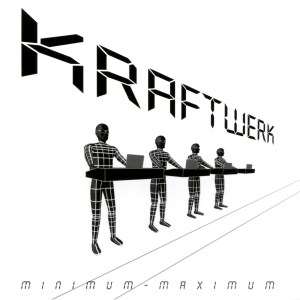I currently have a win 11 machine and would like to dual boot with Linux. Looking at some of the different options, it seems many aren’t recommended for dual booting. Are there any that are?
The best way to dual boot is to have separate hard drives for Windows and Linux. I’m not aware of some distros bring more windows friendly than others.
Can you plese elaborate on why? I was thinking of dipping my toes in with Linux but my plans were to have it on the one drive.
Supposedly Windows can mess with the linux bootloader if it’s on the same drive, i never had it happen back when i still dual booted. Reinstalling the bootloader isn’t too hard though if it ever does happen.
Same, I dual booted for almost 10 years on 3 system machines and never once had it happen. But I’ve seen it reported before, so it’s something to be aware of.
A mitigation is to have a Linux live USB to boot into to reinstall your bootloader (GRUB, systemd-boot, etc, depending on distro). I haven’t heard of Windows actually destroying partitions or data, and perhaps it doesn’t do it if your boot partition doesn’t look like a Windows boot partition (e.g. it’s a different filesystem), IDK. But learning to reinstall the bootloader from a live CD isn’t that hard (usually just running one or two commands).
So, you’ll probably be fine, just do a little research first if you’re nervous.
Is it possible people are just misremembering installing Windows second and mistaking it as a random Windows upgrade?
@illi @janNatan if you boot from BIOS (sometimes called legacy boot in setup menu) rather than UEFI, you can only select which disk to boot from, and the disk had to store boot details at the beginning of disk (MBR): both OSes could end up fighting over it. Linux operating systems are often careful to warn about this, but windows just assume they are the only operating system on a PC and overwrite it. (From memory, might need some checking 🤣)
I’ve not had issues since dual booting with UEFI.
I believe you are correct. I had my MBR overwritten a few times back in the Windows XP days, but haven’t heard of it happening on modern UEFI setups outside of warnings like these.
I still segregate my system drives out of paranoia though.
Almost all distros can dual boot, so there’s little reason to highlight one as being the best for it. Dual booting is a bit messy and risky no matter what you do, so back up your data first and, if you’re new to Linux, look up instructions for dual booting Windows 11 and your chosen distro.
Only one I can think of that does anything special with dual boot, off the top of my head, is Q4OS, which offers a way to install it from within Windows using an app. (It also happens to be tailored towards people familiar with Windows XP or 7, so it should be a somewhat smooth transition for a first time Linux user.) I haven’t tried this myself, but I imagine it just expedites the usual steps of dual booting: shrink the Windows partition, then install into the resulting free space (or to an unused disk).
If that doesn’t sound appealing, just try any distro recommended as “beginner friendly”, like Linux Mint. Tutorials should be easy to find.
Dualbooting is no problem just install windows first then Linux. If you can put them on different physical drives. Even if windows mess up something you can always access it by the boot menu. I have done quatro boot a decade ago without any major hiccups. Want to see what your hardware can do without windows dragging everything down? Try peppermint. But you can dual boot any distro
dualbooting is often messy because windows update can delete things required for linux to boot.
or to be more specific, it deletes grub, the bootloader.
i’ve heard you can use a different bootloader called refined to prevent this from happening, that might be worth looking into.
as for which distro, it doesn’t really matter. the only real differences between distros are the package managers and repositories (servers for application and update downloads) they use by default. if you like frequent updates, you choose one that has frequent updates, if you don’t, you don’tYou should focus less on dual boot and more on beginner-friendliness. If the distro is very good at dual booting (actually never heard of such a thing) but is a catastrophe concerning usability, then it doesn’t make sense i guess. Don’t install Linux to hate it :-). Just try a user friendly distro like Mint or maybe even Manjaro. ( Sooner or later you will end up using Arch and tell people on the internet, that you’re using Arch btw. I’m using Arch btw.)
If you can, I would recommend keeping your operating systems on separate disks, and even disconnecting your windows disk whilst you install your distro of choice.
I personally multi boot win 10, 11 (SW testing purposes) and Fedora Workstation on my primary system, they each live on their own drive.
Someone just told me about ventoy and how it’s great for dual booting but I haven’t looked it up to see if it’s a usb only thing or what.
Also PopOS is pretty cool for a OS to try, it’s what I’m about to setup on my dual boot machine since its been recommended for gaming
Ventoy is a tool specifically for booting from USB drives.
aren’t recommended for dual booting
Because this makes no difference.
Want to be able to find help quickly? Copy power users. They are the most active home users online. They will know the most about their own setup. Use Arch Linux.
Want to learn enough to fix things if they break (or make improvements)? Use the Arch Linux installer.
Use separate storage devices, so you can always optionally use the UEFI boot menu.
Probably the safest, most cost effective approach is to use WSL.








